Price:₹9,999.00
Har Ki Dun Trek A Spiritual And Scenic Journey Through The Valley Of God” Your Ultimate Destination in Uttarakhand -2025
Har Ki Dun Trek lies within the Govind Wildlife Sanctuary and National Park. Situated in the Himalayas, this trek offers enchanting beauty, a bracing climate, and lush green meadows. What could be better than spending a few days in this serene paradise? Har Ki Dun Trek is often referred to as the “Valley of Gods.” It sits at an altitude of 11,958 ft (3,645 m) and follows a historic route that is over 500 years old.
According to the legend from the Mahabharata epic, this valley was once a part of King Duryodhana’s domain. Locals also believe that in their final years, the Pandavas passed through this valley on their way to Swargarohini Peak, believed to be the path to heaven. Thus, this valley came to be known as the “Gateway to Heaven”.As you journey through the enchanting alpine forests and serene meadows of Devsu Bugyal, the panoramic views of the mountain range unfold before you. Every step on the Har Ki Dun trek immerses you in its irresistible charm, leaving you captivated by its beauty.
The Supin River is a mesmerizing highlight of this trek, guiding you along its scenic, enchanting trail with the soothing melody of nature. As you walk beside its pristine waters, the playful river birds and lush green islands of vegetation create a breathtaking spectacle, immersing you in the serene beauty of the Himalayas. This picturesque trekking destination is a paradise for nature lovers and adventure seekers alike.
Along the way, you’ll encounter charming villages of the Garhwal Himalayas, which offer a chance to experience the beauty of Garhwali culture, making your trek truly unforgettable.
Whether you’re trekking to immerse yourself in natural beauty or seeking spiritual solace, the Har Ki Dun Trek promises a perfect blend of spiritual tranquility and thrilling adventure, making it a dream destination for explorers and thrill-seekers. Don’t miss out on this once-in-a-lifetime opportunity to experience the “Valley of Gods” trek in 2025.
Har Ki Dun Trek Day by Day Short Itinerary, Altitude, and Trek Distance
Day 1: Drive from Dehradun Railway Station to Sankri Base Camp
Altitude Gain: 2,089 ft to 6,309 ft | Drive Distance: 190 km | Drive Duration: 8 to 9 hours | Overnight Stay: The Grand Shiva Home stay at Sankri (Twin Sharing) | Pick-up point for Himalayan Hikers trekkers: Dehradun Railway Station at 7:00 am
Route: Dehradun → Mussoorie Kamptifall → Naugaon → Purola → Jarmola → Sankri
Highlight
Reach the Har Ki Dun Trek Pickup Location, Dehradun Railway Station, at 7:00 am. The Himalayan Hikers team will receive you there and brief you about the trek. Then the journey begins with a scenic drive from Dehradun through the Garhwal hills to reach Sankri village, which serves as our base camp for the Har Ki Dun Trek.
Day 2: Drive from Sankri to Dharkot via Taluka and same day trek to Cheludgad Near Seema
Altitude Gain: 6,309 ft to 8,158 ft | Drive Distance: 21 km | Drive Duration: 1 to 2 hours | Trek Distance: 06 km | Trek Duration: 4 to 5 hours | Trek Difficulty: Easy to Moderate | Overnight Stay: Cheludgad Campsite (Twin Sharing)
Highlight
Travel from Sankri to Dharkot by taxi, then trek 6 km to Cheludgad camp through scenic forests and villages. Camp overnight under the stars and start early for the next day.
Day 3: Trek from Cheludgad Camp to Bhosla Camp
Altitude Gain: 8,158 ft to 9,795 ft | Trek Distance: 12 km | Trek Time: 7/8 hours | Trek Difficulty: Moderate | Overnight Stay: Bhosla Campsite (Twin Sharing)
Highlight
The trek from Cheludgad to Har Ki Dun camp takes 5–7 hours, follows a moderate trail through forests and meadows, and offers stunning views of Swargarohini, waterfalls, and the Himalayan peak.
Day 4: Exploration Day Trek from Har Ki Dun Valley or Manida Tal- Jamadar Glacier
Altitude Gain and Loss: 9,795 ft to 12,720 ft to 9,795 ft | Trek Distance: 08 km | Trek Time: 6/7 hours | Trek Difficulty: Moderate | Overnight Stay: Har Ki Dun Campsite (Twin Sharing)
Highlight
Exploration Day in Har Ki Dun valley involves a moderate trek to Manida Lake and Jaundhar Glacier Viewpoint. Expect alpine meadows, rocky paths, and stunning views of glaciers and Himalayan peaks.
Day 5: Trek from Har Ki Dun to Cheludgad Camp
Altitude Loss: 9,795 ft to 8,158 ft | Trek Distance: 13 km | Trek Time: 6/7 hours | Trek Difficulty: Easy to Moderate | Overnight Stay: Cheludgad Campsite (Twin Sharing)
Highlight
Trek from Har Ki Dun to Cheludgad via Osla offers lush forests, riverside trails, and traditional village charm. It’s a moderate descent with scenic views, cultural encounters, and peaceful wilderness camping.
Day 6: Trek from Cheludgad to Dharkot -Taluka
Altitude Loss: 8,158 ft to 6,309 ft | Trek Distance: 06 km | Trek Time: 5/6 hours | Trek Difficulty: Easy | Drive Distance: 21 km | Drive Duration: 1 to 2 hours | Overnight Stay: The Grand Shiva Hotel (Twin Sharing)
Highlight
Trek 12 km from Cheludgad to Taluka in 4–6 hours, then drive 11 km to Sankri. Start early, carry essentials, and enjoy forested trails and scenic views along the descent.
Day 7: Drive Back from Sankri Market to Dehradun City
Altitude Loss: 6,309 ft to 2,089 ft | Drive Distance: 190 km | Drive Duration: 8 to 9 hours | Drop point for Himalayan Hikers trekkers: Dehradun Railway Station
Route: Sankri → Jarmola → Purola → Naugaon → Mussoorie Kamptifall → Dehradun
Highlight
The drive from Sankri to Dehradun takes 8 to 10 hours through scenic valleys, forests, and mountain villages. Start early, pre-book transport, and enjoy Himalayan views, rivers, and rest stops en route.
Why Himalayan Hikers Is The Best For Har Ki Dun Trek?
Local expertise: Himalayan Hikers is a local trekking company based in Uttarakhand, India. They have extensive knowledge and experience of the Har Ki Dun trek, including the terrain, weather, and culture of the region. This can be helpful in ensuring a safe and enjoyable trekking experience.
Experienced Guides: The guides at Himalayan Hikers are experienced and certified. They have a good understanding of the Har Ki Dun trek route and can provide valuable insights into the culture and traditions of the local communities.
Good reviews: Himalayan Hikers has received positive reviews from previous clients who have completed the Har Ki Dun trek. They are known for their professionalism, excellent service, and commitment to safety.
Sustainable tourism: Himalayan Hikers is committed to promoting sustainable tourism practices on the Har Ki Dun trek. They follow Leave No Trace principles, use eco-friendly trekking equipment, and support local communities by hiring local staff and using locally sourced food.
Customized itineraries: Himalayan Hikers offers customized itineraries for the Har Ki Dun trek to suit the needs and preferences of their clients. They can tailor the trekking experience to your fitness level, time constraints, and interests.
Affordable Prices: Himalayan Hikers offers competitive prices for their Har Ki Dun trek packages. They provide a range of packages that cater to different budgets and requirements.
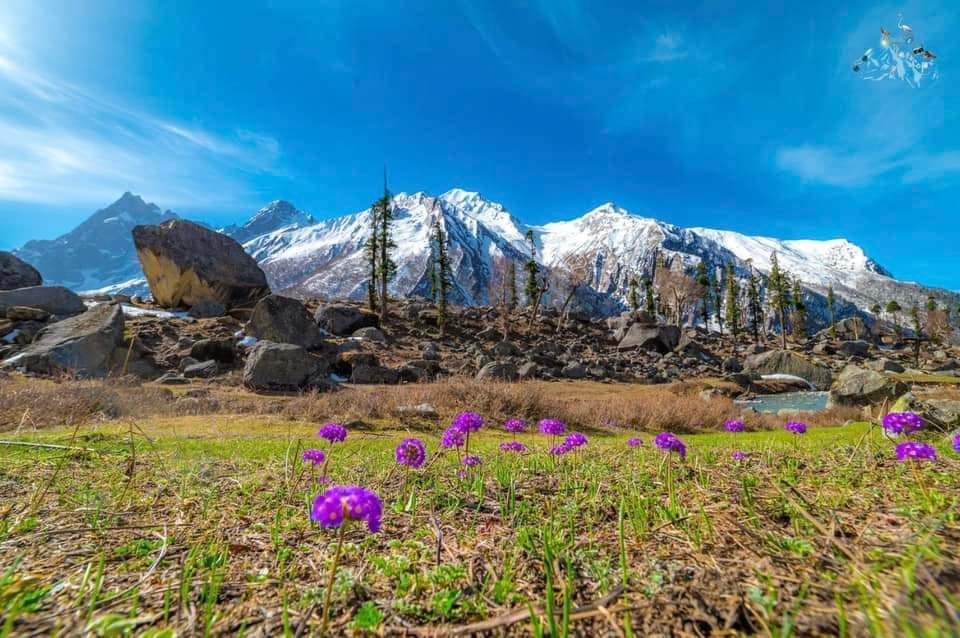
Here are some of the highlights of Har Ki Dun Trek:
Jaundhar Glacier: This is a beautiful glacier located near the Har Ki Dun Valley. The glacier is surrounded by snow-capped peaks and offers stunning views of the surrounding landscape.
Morinda Tal: This is a beautiful high-altitude lake located on the Har Ki Dun Trek. The lake is surrounded by lush meadows and offers a serene and peaceful atmosphere.
Har Ki Dun Valley: The Har Ki Dun Valley is one of the main highlights of the trek. The valley is home to a variety of flora and fauna and offers breathtaking views of the surrounding mountains.
Osla Village: Osla is a small and picturesque village located on the Har Ki Dun trek. The village is home to a number of traditional houses and offers a glimpse into the local way of life.
The term “Har ki Dun” translates to “Valley of Gods” or “Valley of Lord Shiva” in Hindi. It is derived from the combination of two words:
“Har” or “Hara”: This word refers to Lord Shiva, who is considered one of the principal deities in Hindu mythology. Lord Shiva is often associated with the Himalayan region and is regarded as the supreme deity who resides in the mountains.
“Doon”: This word refers to a valley or fertile, flat land nestled between mountains. The term “Doon” is commonly used in the Indian subcontinent to describe such valley regions
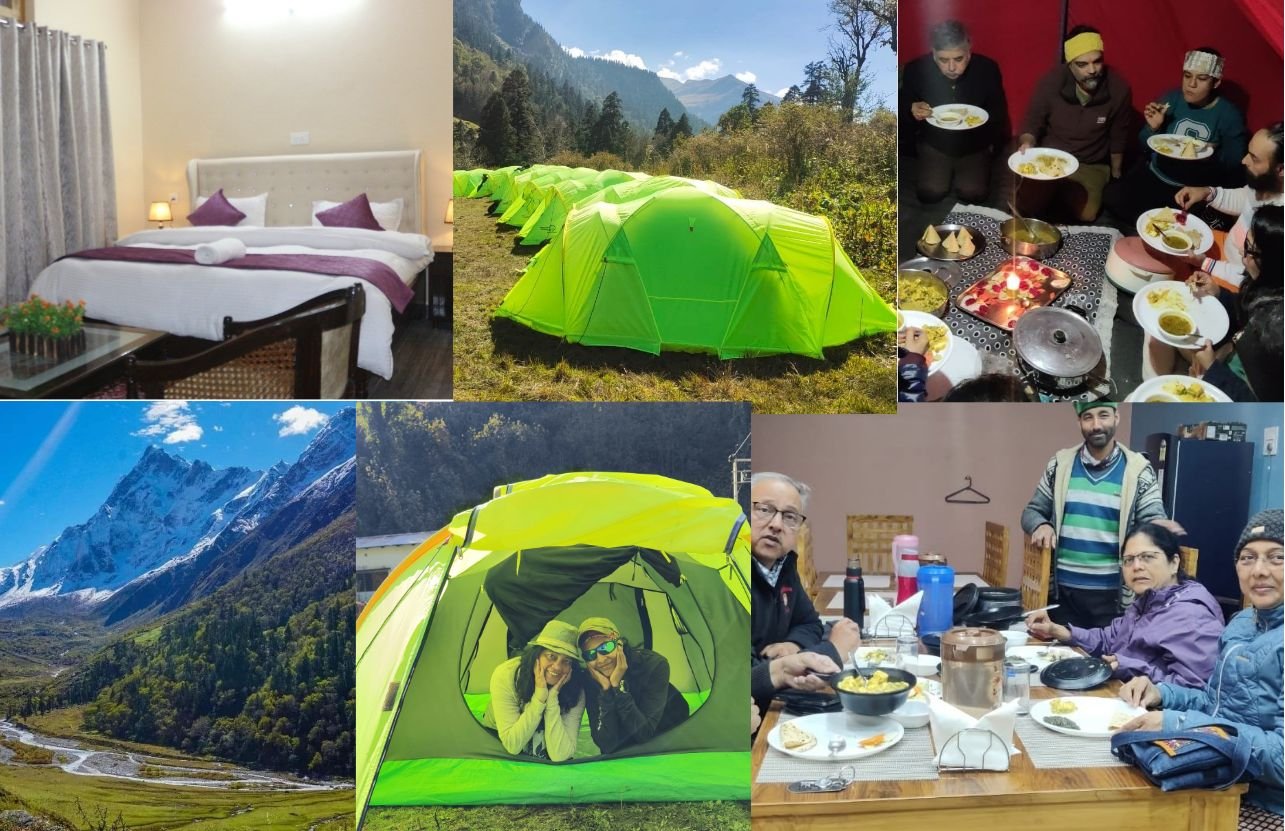
About Har Ki Dun Trek
Har Ki Dun trek, which is the most popular trek in the Garhwal Himalayas. The height of the Har Ki Dun trek is 3600 meters. It starts from Sankri – A Small Paradise and Taluka which are the last road point of this trek. Har ki Dun trek comes along this route in 4 Himalayan Villages, the first Dhatmir, Gangad, Panwani, and Osla village are the last villages of this area which Are called marginal villages, Har ki dun trek is a very popular trek not only in India but also in the world.
My grandfather used to say, at some time, foreign tourists used to come here a lot, and then people in India did not know much about trekking. That’s why Har Ki Doon treks are the oldest and special.
People go for other treks by this route, like, Bali Pass, Borasu Pass, Dhumdhar Kandi Pass, Maldaru Lake, Bainya Top, Black Peak Expedition, Swargarohini Peak Expedition, Ruinsara Tal, there are more so people come here all year round Live on.
Har Ki Dun Trek Temperature is always varies with time. The summer temperature of this is Day – (5°C to 15°C), Night – (2° C to 8° C) and the winter temperature is Day (-2°C to -5° C) Night (-5°C to -12°C).
Many people also called this trek is Har Ki Doon or Har Ki Doon Valley because they may not know the exact name of this trek. Many People search for this trek on Google in different names like Harkidun, Har Ki Doon, Har Ki Doon Valley, and etc.
There are various Har Ki Dun packages available that offer guided treks, accommodation, and meals, making it easier for trekkers to experience this beautiful valley.
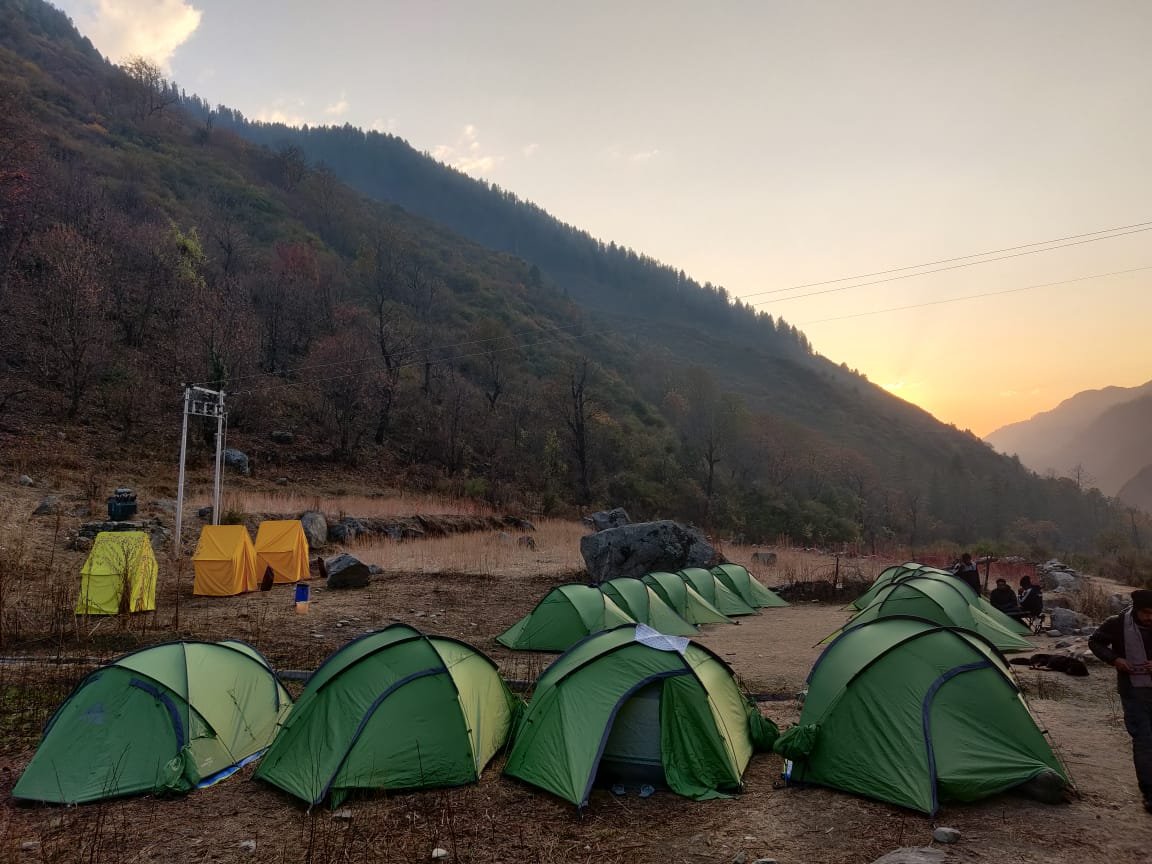
Trekking to this enthralling valley can be a divine experience for a lifetime.
Har Ki Dun Trek or Har Ki Doon Trek comes in the category of epic historic adventure treks. There you can find the essence of mythologies. You can find lavish meadows, and grasslands, You will go through a thick dense forest covered with Rhododendron trees, and many others trees, the trail is beautiful you can see flowers blooming all around and in winter it gets covered by snow, there is the number of species of birds in the woods, you can spot a variety of birds there. mountain ridges, pine forests, glacial ranges, and jaw-dropping views of the Great Himalayas.
Har Ki Doon (The Valley of Gods) or Har Ki Dun is the only valley from where you can have a glimpse of elevated peaks. Like Bandarpoonch, Black Peak, Kalanag, Bali Pass, Ruinsara Lake, and Swargarohini – I, II, and III. And many other peaks!
During the trek, you will come across the ancient villages. It’s about 300 decades old and will surely take you back in time. On the trail, you will encounter the local lifestyle and communities with lavish vegetation grown in the fields.
Today also, the local people there still worship Duryodhana As their deity. Thus, the Har Ki Dun trek is filled with solemn surroundings and legendary culture. It is a must-go for all the travel lovers and nature seekers out there.
Har Ki Dun Trek the Majestic valley in Garhwal Himalayas
Har Ki Dun is Situated in the charming Garhwal region of the Great Himalayas in Uttarakhand. It’s a large valley that follows in the footsteps of Indian mythology and, till today, is known to be “Har Ki Dun.”
It has been present for more than 500 decades, no doubt famous as the “Valley of the Gods”. Har Ki Dun has the essence of history and mythology along with natural beauty. There is a lush climate surrounded by the soothing greenery desired. So that’s the reason why Har Ki Dun is known as the “Valley of Gods”.
Truth Behind The Myths
Many fables and tales of the era of Mahabharata are admired here. However, it is essential aware of the readers and trekkers about the real facts and myths.
Many trekking companies claim myths about the worship of Duryodhana in the temple of Yudhishthira. Local people believe that they reach heaven via the Har Ki Dun Trek. The truth is none of this exists here as per accurate facts and research. On the contrary, the chronicle of Yudhishthir reaching heaven through the Har ki Dun trail never exists here.
Instead, the saga of reaching heaven was through the path of Badrinath towards Swargarohini peak at Narayan Parvat (mountain).
The locations elapsed are Laxmi van, Chakaratir, Sahastradhara, and Satopanth Lake.
Furthermore, there is no existence of any Duryodhana temple in the Mori district of Uttarkashi. Instead, the temple, which is claimed as Duryodhana Temple, is the Someshwar Mahadev temple, a chapel of Lord Shiva.
Thus, Har Ki Dun is also known as “The Valley of Shiva.”
Why Choose Har Ki Dun Trek?
Before heading towards the itinerary, it is essential to perceive the reason behind choosing the Har Ki Dun trek.
- Scenic Beauty: The trek provides breathtaking views of the Himalayan peaks, lush green meadows, dense forests, and serene landscapes. The natural beauty of the region is sure to captivate people of all ages.
- Moderate Difficulty: Har Ki Dun is considered a moderately challenging trek, making it suitable for families with older children, as well as adults of varying fitness levels. The trekking distance is manageable, and the terrain is not too steep.
- Cultural Experience: The trail takes you through several picturesque villages like Sankri and Osla. This offers a unique opportunity for families and students to interact with the local communities, learn about their culture, and gain insights into the traditional way of life in the Himalayan region.
- Wildlife and Flora: The Govind Wildlife Sanctuary, through which the trek passes, is home to diverse flora and fauna. It’s a great educational opportunity for students and nature enthusiasts to observe and learn about the local ecosystems and wildlife.
- Educational Value: For school groups, the trek can be a valuable educational experience, providing lessons in geography, biology, and ecology. It’s a chance to learn about Himalayan geology, wildlife, and the impact of climate change on the region.
- Physical Activity: The trek encourages physical activity, helping families and adults stay active and healthy. It’s a great way to enjoy the outdoors and bond with family members or friends.
- Adventure and Exploration: For those seeking a taste of adventure, the trek offers a sense of exploration and adventure in a relatively safe and controlled environment.
- Peace and Tranquility: The serene and tranquil surroundings of Har Ki Dun make it an ideal place for relaxation and rejuvenation. It’s an opportunity to disconnect from the hustle and bustle of everyday life.
- Accessibility: The trek starts from Sankri, which is accessible by road from Dehradun, making it relatively easy to reach for families and groups.
- Safety: Har Ki Dun is generally a safe trek, and the local trekking community is well-versed in guiding and assisting trekkers. However, it’s important to follow safety guidelines and be prepared for changing weather conditions.
Best Time to Visit Har Ki Dun Trek?
The best time to visit Har Ki Dun Trek in Uttarakhand, India, depends on your preferences and what you want to experience during your trek. Here are the two primary trekking seasons, each with its own advantages:
Spring (March to April)
(I) – Weather: The weather is generally clear, with longer daylight hours and meadows slowly waking up from winter.
(II) – Temperatures: 10°C to 20°C
(III) – Difficulty: Easy to Moderate – Ideal for first-time trekkers and nature lovers.
(IV) – Warm Layers Needed: Light to moderate warm layers for cool mornings and evenings.
Why Do Har Ki Dun Trek in Spring?
Spring paints the Har Ki Dun valley in pastels and blooms. Alpine meadows begin to blossom with wildflowers like rhododendrons and primulas, creating a painterly trail framed by snow-kissed peaks. Clear skies offer uninterrupted views of Swargarohini and other majestic mountains. The mild temperatures and moderate trail conditions make this one of the most rewarding seasons for scenic beauty and comfortable trekking.
Summer (May to June)
(I) – Weather: Days are warmer and longer; evenings stay cool and refreshing.
(II) – Temperatures: 15°C to 25°C
(III) – Difficulty:Moderate – Warm weather makes trekking pleasant, but sun exposure and altitude still require caution.
(IV) – Warm Layers Needed:Carry warm clothing for the evenings and early mornings.
Why Do Har Ki Dun Trek in Summer?
This is the most popular season for the Har Ki Dun trek. With fully accessible trails and a snow-free path, summer offers the easiest and safest conditions for all levels of trekkers. The valley is at its most lush and vibrant, birdsong fills the air, and the rivers run clear and energetic. It’s also a great time for photography, with bright skies and dramatic mountain backdrops.
Autumn (September to October)
(I) – Weather: Post-monsoon clarity with crisp, dry air and expansive mountain views.
(II) – Temperatures:10°C to 15°C
(III) – Difficulty: Moderate – Excellent visibility and fewer weather disruptions.
(IV) – Warm Layers Needed: Yes – Nights can get chilly, especially in late October.
Why is Autumn the Best Time for the Har Ki Dun Trek?
Autumn casts a golden glow across the landscape. Deciduous forests along the trail transform into a mosaic of red, orange, and yellow. Skies are crystal clear after the monsoon rains, offering panoramic views of the Garhwal Himalayas. The air is cool and refreshing, and with fewer crowds than summer, this season promises both serenity and spectacle.
Monsoon and Winter: Not Recommended
July to August: Monsoon rains make the trail slippery and treacherous, with high risk of landslides and leech infestations.
(II) – November to February: Winter transforms the region into a snow-covered wilderness. Sub-zero temperatures and heavy snowfall often render the trails impassable. Trekking during this time is only advised for highly experienced trekkers on specialized expeditions.
Har Ki Dun Trek – Month-Wise Guide
| Month | Temperature Range | Trail Condition | Recommendation | Special Notes |
| January | -5°C to 5°C | Deep snow, trails blocked | Not Recommended | Extremely cold with heavy snowfall; trails are mostly inaccessible. |
| February | -2°C to 8°C | Snowbound, limited access | Not Recommended | Dangerous conditions unless with a trained winter expedition group. |
| March | 5°C to 15°C | Clearing snow, blooming starts | Recommended (Spring begins) | Meadows begin to bloom, skies clear, fewer trekkers. |
| April | 10°C to 20°C | Dry and firm trails, flowers blooming | Highly Recommended | Excellent time for flora, vibrant landscapes, and comfortable temperatures. |
| May | 15°C to 22°C | Very good, fully open trails | Highly Recommended | Peak trekking season, clear skies, ideal conditions. |
| June | 15°C to 25°C | Warm, may get humid at lower altitudes | Recommended | Late June may bring pre-monsoon clouds. Still a great time overall. |
| July | 15°C to 20°C | Muddy, slippery, risk of landslides | Not Recommended | Monsoon begins. Trails are unsafe due to rain and leeches. |
| August | 14°C to 20°C | Wet, risk of blockages and leeches | Not Recommended | Continuous rain and poor visibility; landslides are possible. |
| September | 10°C to 18°C | Drying trails, lush post-monsoon | Highly Recommended | Clear skies return, excellent visibility, and vibrant forest colors. |
| October | 8°C to 15°C | Stable, crisp air, dry trails | Highly Recommended | Stunning fall foliage and cool, dry trekking conditions. |
| November | 0°C to 10°C | Early snow possible, cold nights | Not Ideal (unless experienced) | Trails may begin to close due to snowfall; limited window early in the month. |
| December | -2°C to 5°C | Snowy, frozen patches, icy paths | Not Recommended | Heavy snow and freezing temperatures make trekking hazardous. |
How Difficult is Har Ki Dun trek
The Har ki Dun trek is generally considered to be a moderate trek, suitable for beginners and experienced trekkers alike. It offers a beautiful and relatively accessible trail through the western Garhwal Himalayas in Uttarakhand, India.
The trek usually takes around 06 nights and 07 days to complete, covering a distance of approximately 47 kilometers round trip. The trail involves moderate ascents and descents, with some steep sections, rocky paths, and occasional river crossings. However, compared to other high-altitude treks in the region, the Har ki Dun trek has a relatively gradual ascent, making it more manageable for beginners.
The highest point on the trek is the Jaundhar Glacier, which is situated at an altitude of around 4,200 meters (13,780 feet). Altitude sickness is generally not a major concern on this trek unless you have a pre-existing condition or are particularly sensitive to altitude.
While physical fitness and stamina are important for any trek, including Har ki Dun, it is advisable to prepare yourself with regular exercise and some pre-trek training to enhance your endurance and strength. It’s also recommended to acclimatize properly by taking rest days and staying hydrated during the trek.
Har Ki Dun Trek Safe or Best Treks For Beginners ?
Yes, the Har ki Dun trek is generally considered safe and suitable for beginners. While it is always important to be prepared and take necessary precautions when embarking on any trek, Har ki Dun offers a relatively moderate level of difficulty that can be managed by beginners who are physically fit and prepared.
Here are a few reasons why the Har ki Dun trek is often recommended for beginners:
Moderate Difficulty: The trek involves moderate ascents and descents, with gradual climbs and manageable terrains. While there are some steep sections and rocky paths, they can be tackled with proper care and trekking techniques.
Well-Defined Trail: The trail for Har ki Dun is well-marked and well-defined, making navigation easier for beginners. This reduces the chances of getting lost or straying off the intended path.
Trekking Infrastructure: The trek is quite popular among trekkers, and there is a decent infrastructure in place, including trekking guides, local support staff, and well-established campsites along the route. This provides a level of comfort and assistance for beginners who may not have extensive trekking experience.
Limited Altitude Concerns: While the trek reaches a maximum altitude of around 4,200 meters (13,780 feet) at the Jaundhar Glacier, the gradual ascent and the overall altitude profile of the trek make it less prone to altitude sickness. However, it’s always important to be aware of the symptoms of altitude sickness and take necessary precautions.
Despite being considered safe for beginners, it’s still recommended to prepare adequately for the trek. This includes physical fitness training, carrying the necessary gear and supplies, and consulting with experienced trekkers or local guides for any specific advice or precautions related to the current conditions of the trek.
Remember to plan your trek well, be aware of your own limitations, and prioritize safety at all times.
Trekking Fitness Training – Best Workouts for Strength & Stamina
Trek Fitness Chart
Before embarking on a trek, trekkers need to prepare their bodies physically. Trekking can be demanding, and it requires a certain level of physical fitness to avoid injury and fully enjoy the experience. Here are some important fitness considerations for trekkers:
Target: 4.5 km in 45 Minutes (Easy to Moderate Level Trek)
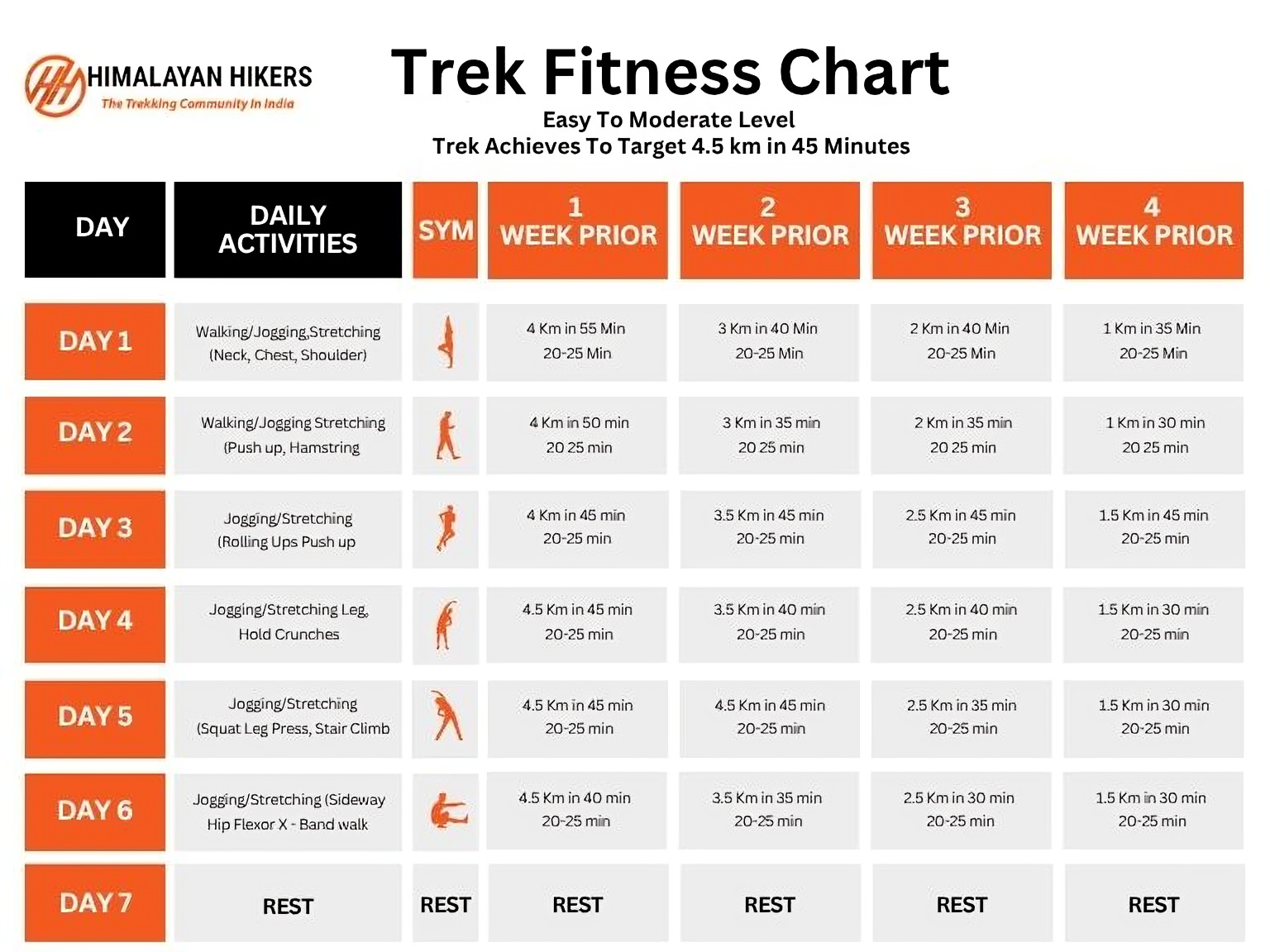 Now Begins Your Trekking Journey!
Now Begins Your Trekking Journey!
Cardiovascular endurance: Trekking involves walking long distances and often at high altitudes, which can be challenging for the cardiovascular system. Cardiovascular exercises such as running, cycling, or swimming can help improve endurance.
Strength training: Trekking requires strength in the legs, core, and upper body. Strength training exercises such as squats, lunges, planks, and push-ups can help build the necessary strength.
Flexibility and balance: Trekking involves navigating uneven terrain and often requires the body to move in different directions. Stretching exercises and activities that improve balance such as yoga or Pilates can be helpful.
Altitude acclimatization: If you’re planning a high-altitude trek, it’s important to acclimatize properly. This means gradually increasing your altitude over a period of days to allow your body to adjust to the lower oxygen levels.
Mental preparation: Trekking can be mentally challenging, so it’s important to prepare yourself mentally as well. Practicing mindfulness, meditation, or other stress-reducing techniques can be helpful.
It’s important to remember that everyone’s fitness level and needs are different, so it’s a good idea to consult with a doctor or fitness professional before starting any new exercise program.
About Base camp Sankri in Har Ki Dun Trek
Not only Sankri is the base camp for the Har Ki Dun Trek but also for 25 + Himalayan treks. Thus, it always remains busy by the hustle and bustle of trekkers. This small village is genuinely beautiful because of its pleasant setting and calm environment.
There are quaint wooden houses made of Deodar wood. And also some hotels and restaurants serving delicious local food. Their specialty is “Red Rice.” So, get to know the villagers and have a glimpse of their lifestyle.
It is the best place to explore the Himalayan culture and tradition.
You will also have some excellent views of lofty Swargarohini Peaks and Bandarpoonch. And yes, do not miss their glorifying sunrise and sunset views.
Moreover, the nearest village to Sankri is “Saur” The temple of Someshwar Devta there is highly worshiped by the villagers.
Therefore, the base camp will leave you admiring its exquisite beauty.
How to reach the Har Ki Dun trek
The Har Ki Dun Trek Distance is 46 km, which begins from the scenic and remote village of Sankri, nestled in Uttarakhand’s Uttarkashi district. To reach this beautiful but offbeat trailhead, trekkers must first arrive at Dehradun Railway Station before 7:00 am, one of the main transit hubs for trekking in the Garhwal region. Below is a step-by-step guide to help you plan your journey:
1. Reach Dehradun Railway Station – Har Ki Dun trek Pickup Point
Dehradun Railway Station is the designated pickup location for the Har Ki Dun trek. It’s about 5.8 km (21 minutes) from Dehradun ISBT and 26.3 km (around 48 minutes) from Jolly Grant Airport. Plan your arrival accordingly.
2. How to Reach Sankri Base Camp from Dehradun
Once you are in Dehradun, now Sankri Base Camp is about 190 km from Dehradun Railway Station. If you are trekking with Himalayan Hikers, then all you need to do is to reach at Har Ki Dun Trek Pickup Location at 7:00 am, Dehradun Railway Station. From there you will be taken to Sankri via Mussoorie, Kemptifall, Purola, Mori, Sankri route.
However, if you are trekking without our services, then you can follow these options to reach Sankri from Dehradun by road:
Har Ki Dun Trek Distance: Sankri is about 190 km from Dehradun.
Travel Time: The drive usually takes around 8-10 hours, depending on road conditions and traffic.
3. How to Reach Dehradun
Whether you’re coming from Delhi, Mumbai, or another city, here are your options to reach Dehradun:
By Air
- The nearest airport is Jolly Grant Airport, located about 25 km from Dehradun city.
- Regular flights connect it to Delhi, Mumbai, and other major cities.
- You can take a cab or local bus from the airport to the railway station (approx. 45–60 minutes).
By Train
- Dehradun Railway Station is well-connected to Delhi, Haridwar, Lucknow, and other major cities.
- Trains like the Nanda Devi Express and Shatabdi Express are popular choices.
Pro Tip: Buses are also available from cities like Haridwar, Moradabad, Rishikesh, and Chandigarh.
By Road
- You can take overnight buses from Delhi ISBT (Kashmere Gate) to Dehradun.
- Buses range from budget options to luxury Volvo coaches and usually take 6–8 hours.
- You can take a local bus, Vikram, or a private taxi to reach the pickup location from Dehradun ISBT. The travel time is around 20-30 minutes, depending on the traffic in the city.
4. Mobile Connectivity and ATMs for Har Ki Dun Trek
The journey from Dehradun to the Sankri is beautiful and it is you in Dehradun. From Rajpur Road you will go and they will come to Mussoorie which is called the queen of the mountains. After Mussoorie, you will come to Kamptitall. Here you will stop 45 minutes for breakfast and after breakfast, you will come along the Yamuna River – Purola, here you will stay for lunch for 1 hour. After that you will be taken straight to the place where our team Himalayan Hikers will be ready to welcome you.
ATM Availability
Before starting the journey to the Har Ki Dun trek, make sure that you have sufficient cash for the trek ahead. Purola market is the last place where you can withdraw cash from an ATM, but it can be out of service. That‘s why make sure to withdraw money from Dehradun or Mussoorie.
Mobile Network Connectivity
Sankri is a small village located in the Uttarkashi district of Uttarakhand, India. Being a remote location, the mobile network connectivity in Sankri may be limited. However, some of the major mobile network providers like Jio and BSNL have network coverage in Sankri. But as you leave base camp, the network connectivity becomes unreliable.
Pro Tip: Make sure to check with your network provider regarding the network coverage in Sankri and the surrounding areas before your trip.
The Grand Shiva Home Stay in Sankri, Uttarkashi, Uttarakhand
The Grand Shiva Home Stay is our newly constructed luxurious hotel in Sankri (the base camp of Kedarkantha Trek). It offers you local and delicious food prepared by our local family members, 24 Horse Hot Water, Cold Water, Free Wi-Fi, Room Services, and much more, with the help of which we provide our guests with a special experience. Our Homestay has exquisite furnishings with luxurious furniture and high-quality toiletries.
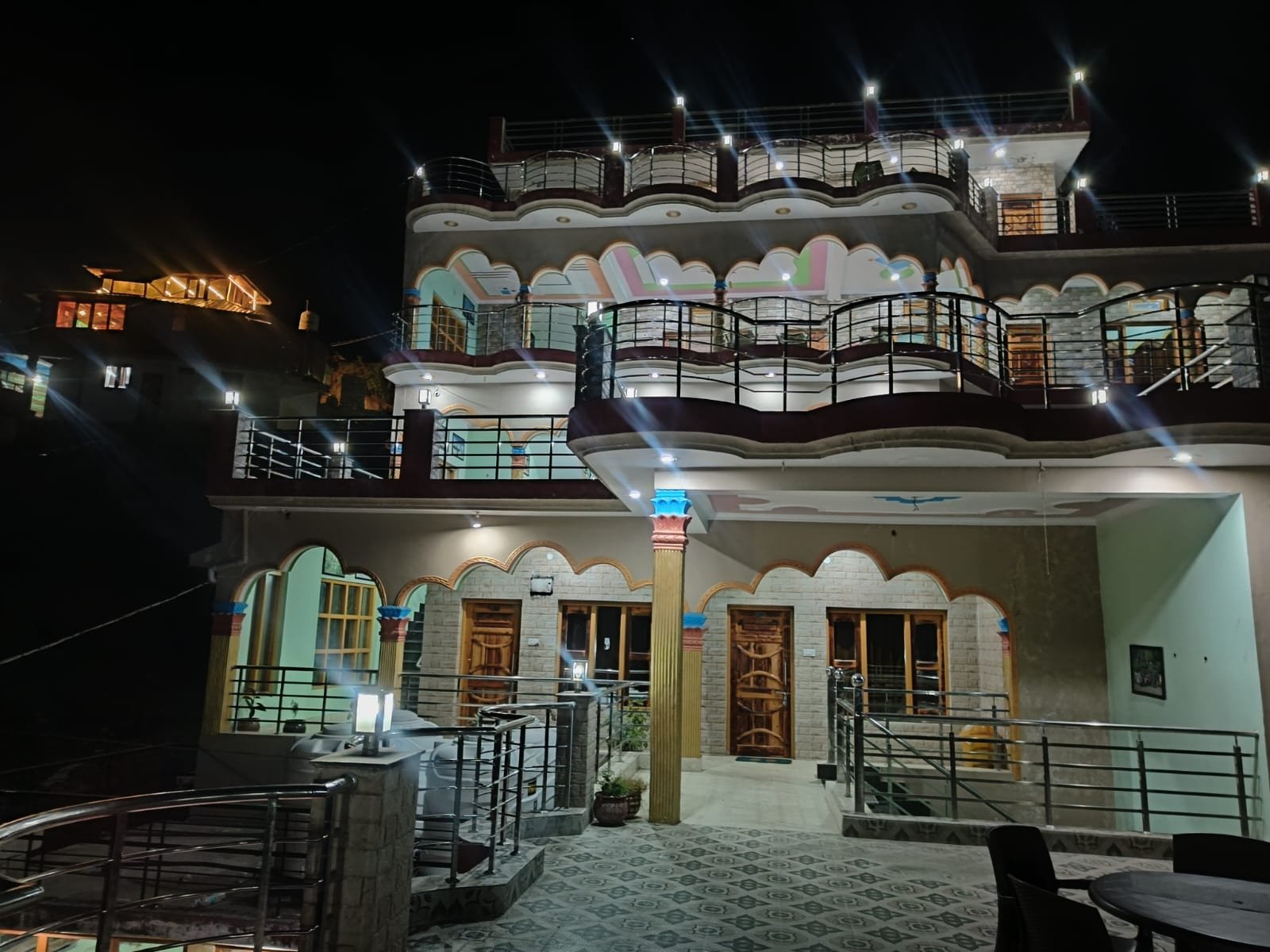
Luxury Rooms in The Grand Shiva Home Stay Sankri
The Grand Shiva Home Stay rooms are spacious, elegant, and comfortable all at once, equipped with everything you need for a wonderfully rejuvenating stay. Every detail of the design and features have been carefully considered. Suites feature lavish furnishings with sleeping and sitting areas and a host of other amenities, including complimentary Wi-Fi Internet,
What do we do for safety in the Har Ki Dun trek?
First of all, the safety of trekkers is much more for us, if you see in the trek, then there are all the risks, which I do not think about.
Himalayan Hikers worry more about you that no one should ever have any problem in the trek.
What should we and you keep more safety in the trek
- Whenever you are going for any trek, it is very important that you go completely fit and ready.
- The trek is not difficult, if you make your feet and your mind calm and strong, you will find the trek very easy.
- While trekking, keep in mind that you are walking on the right route or not always with your guide.
- Most people look somewhere and where they are walking, this can cause twitching in your legs, which can ruin your entire trek.
- It is important to ask your doctor if you have any medical problems
- I should always keep my medical kit with me, it is very important.
- Himalayan Hikers always keep a medical kit with you, such as oxygen cylinders, and medicine to be given in an emergency on the trek
- If any trekkers have any more problems, then they are brought back to the base camp by laying them in the stretcher.
- Our camp in Har Ki Dun trek is around the tree line where you can not have any problem of oxygen
- In case of any medical problem, the help of your guide or well-informed trekkers should be taken
- If there is major health problems in Har Ki Dun trek, then Nearest Hospital is in Mori which is about 46 Kms away from Har Ki Dun trek.

Himalayan Hikers – Provided food During the Har Ki Dun Trek
– We serve five -05 times meals a day including- Breakfast, Lunch, Evening Snakes, Soup, Dinner, A variety of delectable and healthy food is provided which includes; Indian, Chinese and other Western meals. They are nutritious and keep you fit and healthy on the trek.
The type of food provided during a trek can vary depending on factors like the location, duration, and the trekking company or organization you’re with. However, there are some common types of food that are often included in trekking provisions:
- Carbohydrates: Foods high in carbohydrates provide energy for the trek. This includes items like rice, pasta, bread, and potatoes. More
- Proteins: Protein-rich foods help with muscle repair and recovery. Common protein sources include lentils, beans, tofu, meat (if available), eggs, and dairy products.
- Fruits and vegetables: These provide essential vitamins, minerals, and fiber. While fresh produce may not always be available, dried fruits and vegetables or canned options might be included.
- Snacks: Trekking often involves long hours of physical exertion, so snacks are important for quick energy boosts. Snacks like nuts, energy bars, trail mix, and chocolate are common choices.
- Local cuisine: Depending on the region you’re trekking in, you might also get the chance to sample local dishes. This can be a delightful way to experience the culture and flavors of the area.

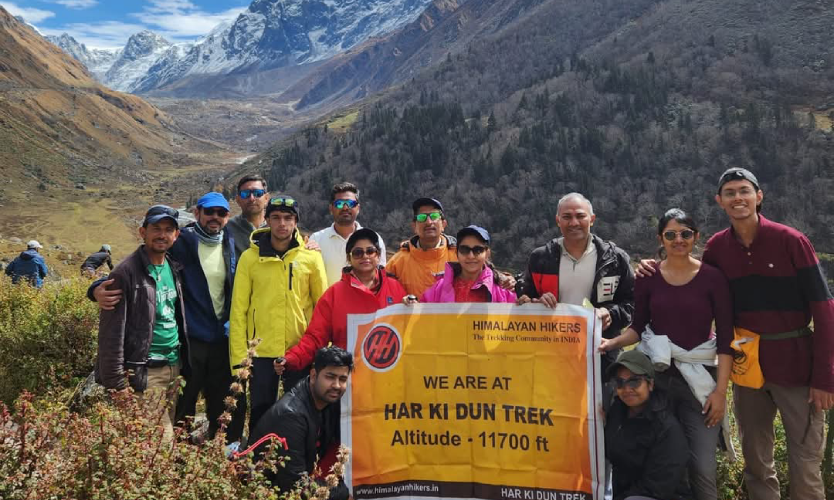





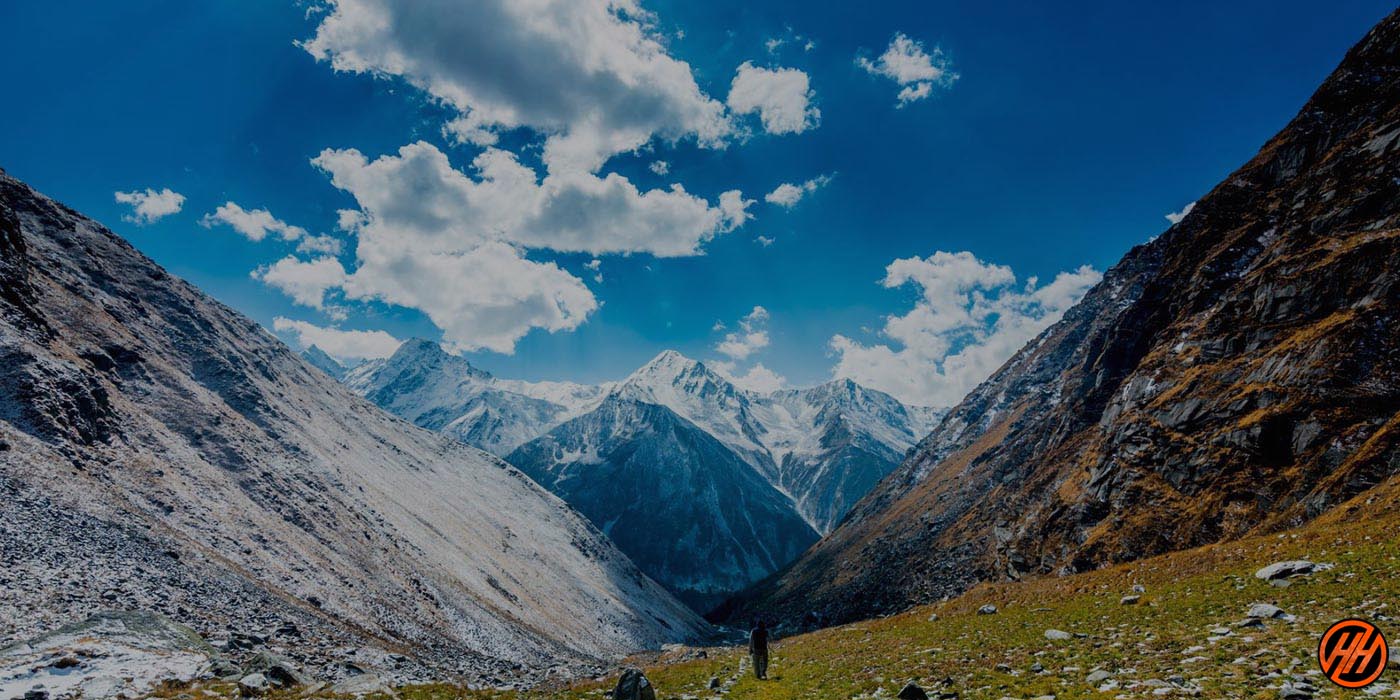
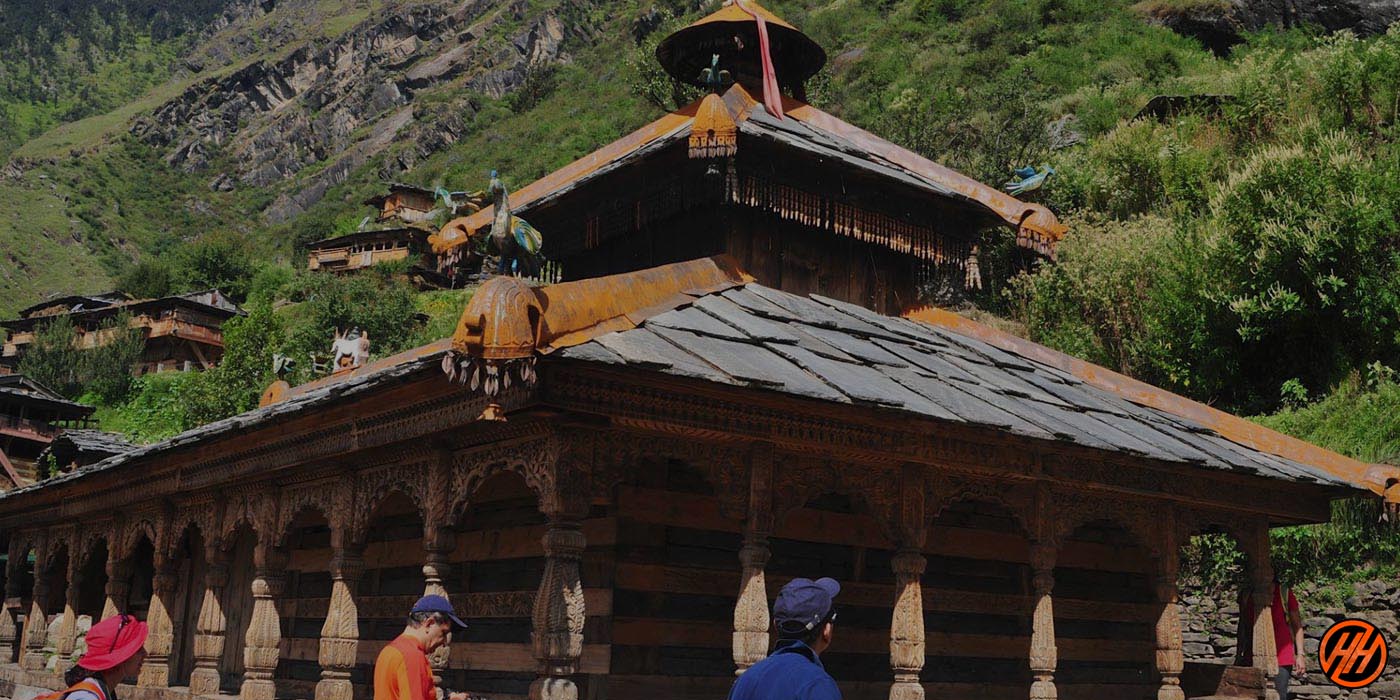
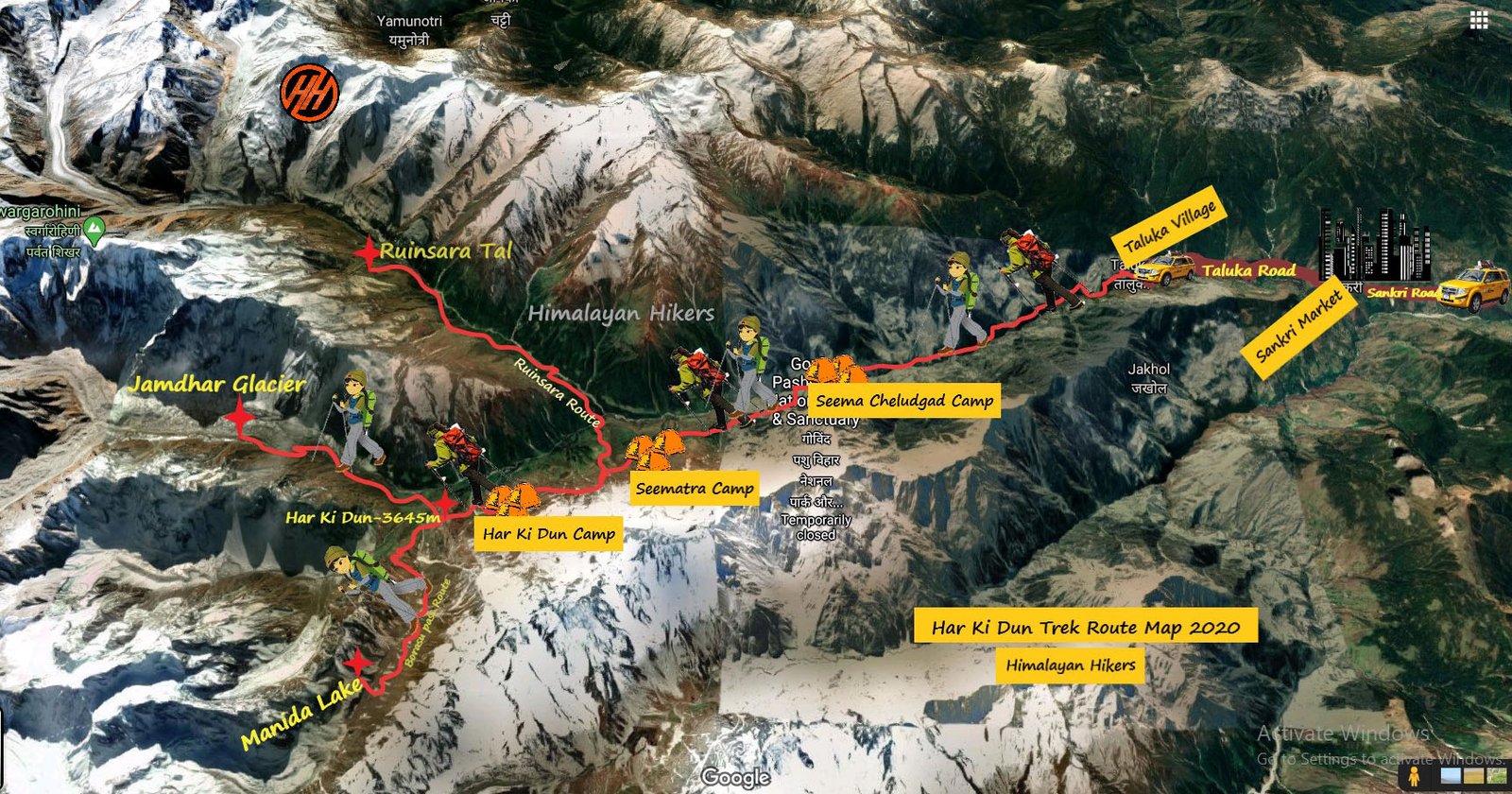

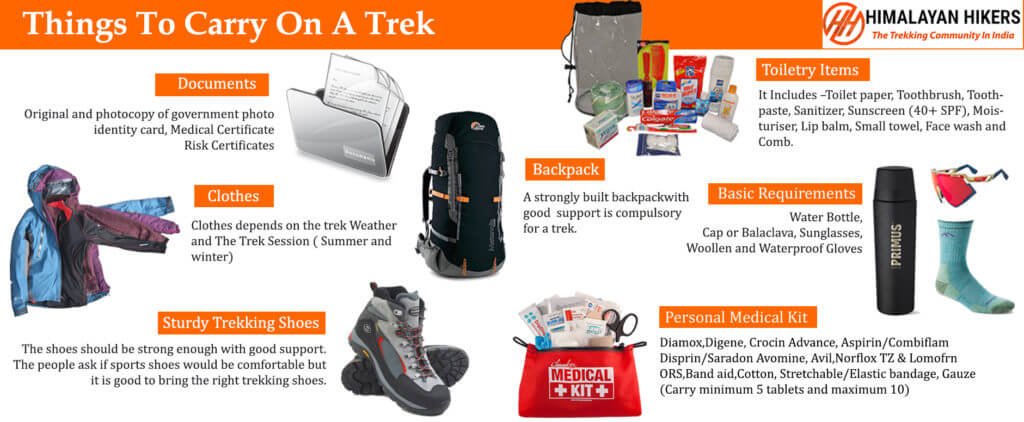
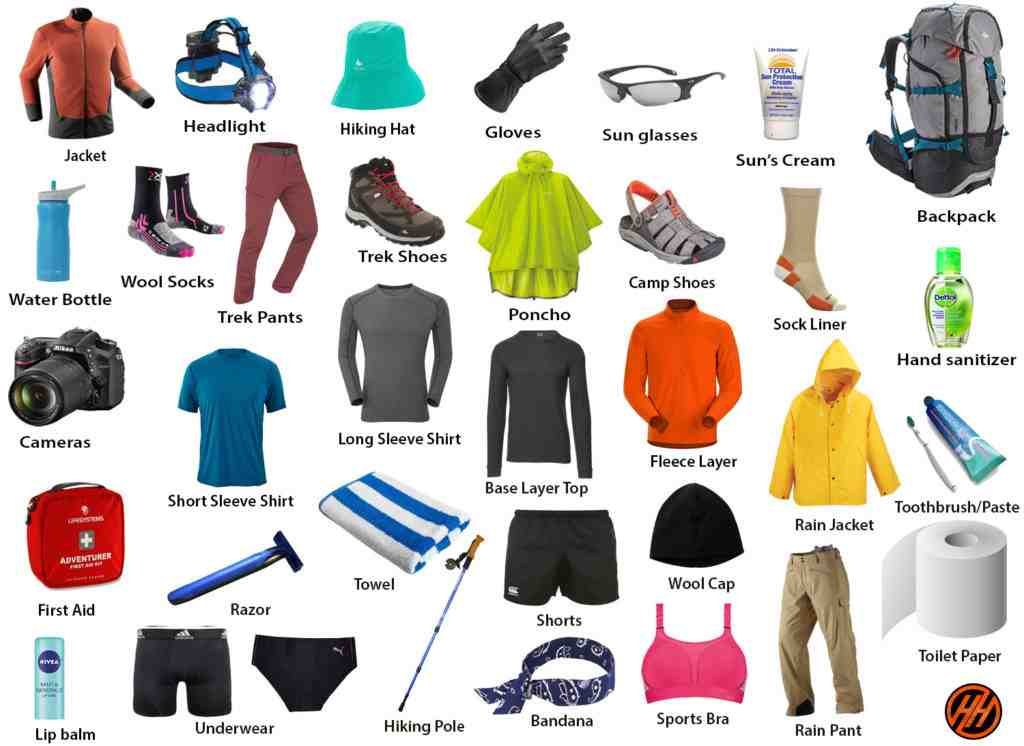
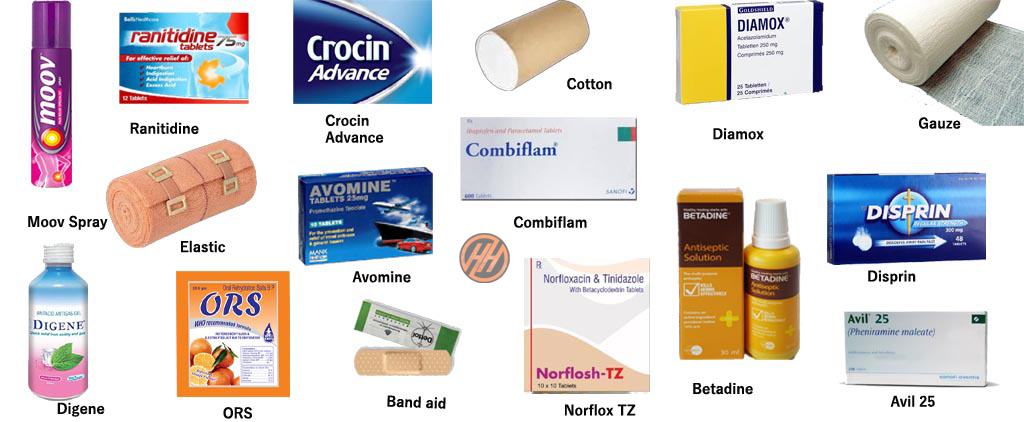
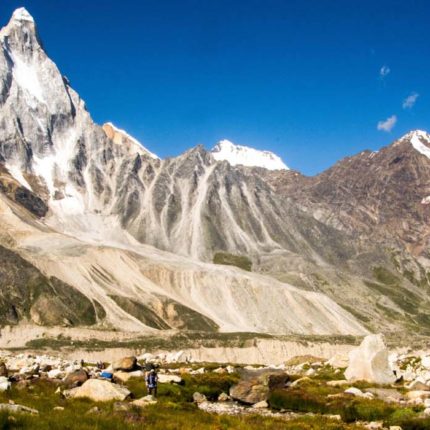
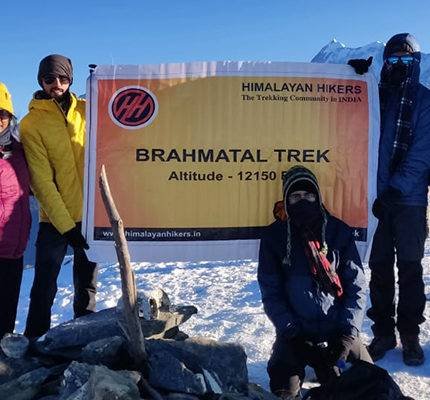
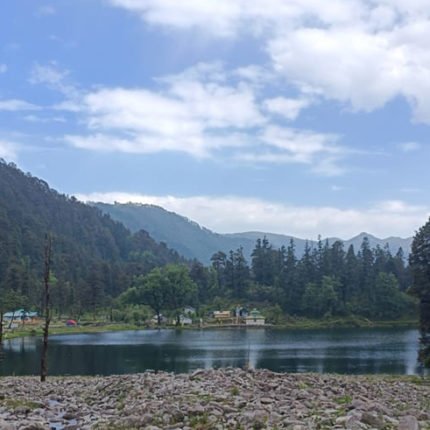

Vivek Kumar Giri (verified owner) –
Just back from my first ever trek — and what an experience it was!
Himalayan Hikers have completely spoiled me with their amazing hospitality. This journey will always hold a special place in my heart.
Huge shoutout to our trek guide, Dinesh Singh Rawat ji, for being such a reliable and knowledgeable guide. From local plants to towering peaks, his insights made the trek even more special!
Honestly, I’m calling this a FOOD TREK — because the food we were served at those altitudes was simply mind-blowing!
From Gulab Jamun, Lauki ka Halwa, Aloo ka Halwa (Aloo Jarda), Custard, Macaroni, Masala French Fries, Spring Rolls to Veg Cutlets — every meal was a feast!
Massive respect and love to our chefs, Sultaru Lal ji and Radhe Rawat ji — the food they prepared could give any 5-star restaurant a run for its money!
Thank you, Himalayan Hikers, for making my first trek such a memorable and wholesome experience. Already dreaming about the next one!
Rituparna Mukherjee –
recently i completed my HAR KI DUN trek with HIMALAYAN HIKERS. my experience was indeed great,trek was organised nicely with all possible amenities like accomodation, fooding, quality vechile support and specific guidelines and support, as it was my first trek each and every detail of trek and guidelines was well explained by the trek leader dinesh ji also along the trekking dinesh ji led the trekkers very mindlfully and carefully.
THANKS TO HIMALAYAN HIKERS and SPECIAL THANKS TO DINESH JI AND HIS TEAM.
looking ahead to participate in some other treks with HIMALAYA HIKERS very soon 🙏🙏
Shivangi –
recently completed my har ki dun trek with himalayan hikers and it was a great experience the views ,the stay everything was worth it apart from that our trek guide janak sir the most humble and knowledgeable guide . overall it was a mesmerizing experience would love to explore more Trek with himalayan hikers
Prakash chaudhary –
Janak Singh’s leadership on the Har Ki Dun trek is unmatched, and the culinary expertise of chefs Nitin and Jagdish makes it even more remarkable. Their meals are a highlight, providing trekkers with both nourishment and a taste of local cuisine. Nitin and Jagdish serve up hearty dishes like vegetable pulao, khichdi, and parathas, making sure everyone stays fueled for the journey. Their hospitality is unmatched, and they create a welcoming atmosphere, ensuring that trekkers are not only well-fed but also feel at home in the mountains.
Md. Sahil –
Great experience with Himalayan hikers and Janak Singh, Har ki dun trek is a fantastic experience, made even better by chefs Nitin and Jagdish. They prepare exceptional meals, making each campsite feel like a home away from home. The food, from warm soups to chapati and sabzi, is always fresh and flavorful, giving trekkers the energy they need. Nitin and Jagdish are friendly and accommodating, always eager to ensure that every trekker enjoys their meals. Their contributions truly elevate the trek, adding warmth and comfort to the rugged adventure.
Jatin yadav –
Himalayan Hikers was fabulous with the trek guide Janak Singh of Har Ki Dun trek is often praised for its incredible organization and hospitality. The trek is made even more memorable by the presence of chefs Nitin and Jagdish, who provide excellent food throughout the journey. Nitin and Jagdish prepare hearty and delicious meals, ensuring trekkers stay fueled for the challenging trail. Their attention to detail in crafting local dishes like rajma chawal, soup, and fresh parathas, using locally sourced ingredients, adds a special touch. Their warmth and dedication to making the trek experience more enjoyable are highly appreciated by all those who undertake the adventure.
Asis Hansda –
We, six members of the family have completed the Har ki Dun trek in October 2024. Four female member including a 11 years girl and a 17 years girl in our team. It successfully completed just because of Radhe ji (guide) and Sachin ji two member of Himalayan Hikers. We very thankful to them for their cooperation. They are very enthusiastic and charming. The kitchen stuff of the every camp have made very delicious menu in every time. We are very grateful to Himalayan Hikers, hip hip hooray.🥳🥳🥳
Rupesh Dastidar –
I recently completed a trek with Himalayan Hikers, and it was an incredible experience from start to finish. The highlight of the trip was our guide, Janak Singh, who was extremely professional, knowledgeable, and genuinely caring throughout the journey. His calm and friendly nature made the trek even more enjoyable.They ensured that everyone in the group was comfortable, safe, and motivated, especially during the more challenging parts of the trek.The food quality during the trek was also good. Despite being in remote areas, the meals were always fresh, nutritious, and delicious, providing the much-needed energy to tackle the tough terrain.I highly recommend them to anyone looking to explore the beauty of the Himalayas
Ravishankar Sahu –
The trek for Har Ki Dun was really beautiful. We were a team of 11 and the guide was helpful with proper information. The highlight I would like to point out is about the food served was hot and everyday there were better options than the previous day, I could not expect anything better while camping in the hills. We were taken to all the places as the itinerary suggested. We went around the villages 300 years old and met the local people. And also experience the local tea and the pahadi maggi. Only feedback I would have was to train the younger staffs as a part of the guide’s team to be respectful as we all come tired from the trek. But there were no hickups whatsoever.
Ravishankar Sahu –
5 out of 5 . it was great experience. The guide we have Mr Tirpen Rawat and Nishant Rana was excellent and highly helpful. i also want to quote that the trekk is not beautiful the company and journey is beautiful. The Himalayan Hikers has that team which will make the trekk beautiful.
Pranav khunt –
Our guide was Mr Pramod Rao – most enthusiastic and friendly .
Felt like our own family member and helped like he meant it, not out of obligation.
Kitchen staff was very cooperative and food was mashallaha –maja hi a Gaya
didn’t expected this type of service at altitude of 3500mtr.
Thanks Himalayan Hikers for wonderful experience and special thanks to Pramod ji.
it goes without saying that next time -only HH
Karthik –
My wife and I recently done har ki dun with himalayan hikers. It was one of the most beautiful trails i ever witnessed. I thank himalayan hikers for making this memorable. Right from the pick up until drop, I never felt the need of any thing. Each and everything was taken care of. The food was amazing through out the trek. The himalayan hikers team treated us not like some random trekkers but like family. I really appreciate this thing. The guide was very experienced and made sure that we made the best of each and every second we spent on the trail. I thank each and every member of himalayan hikers team who made our trek an unforgettable one. Its more than worth what we have paid for. Thank you.
Amitha Nair –
The trek for Har Ki Dun was really beautiful. We were a team of 6 and the guide was helpful with proper information. The highlight I would like to point out is about the food served was hot and everyday there were better options than the previous day, I could not expect anything better while camping in the hills. We were taken to all the places as the itinerary suggested. We went around the villages 300 years old and met the local people. And also experience the local tea and the pahadi maggi. Only feedback I would have was to train the younger staffs as a part of the guide’s team to be respectful as we all come tired from the trek. But there were no hickups whatsoever.
riju das –
I had very good experience with himalayan hikers for har ki dun trek. The food was really amazing and the guide Ganga g was helpful in nature. The entire trek was very organized. So 5 star for them…cheears
Iimon –
very good trek. very good organization by Himalyan Hikers. the scenary is very good. loved the valley. very beautiful place. lloking ahead for next time.
Natasha M –
The trek was breathtakingly beautiful. We went in November and even experienced snowfall. Himalayan Hikers had planned the trip very well. Our guide Vikram along with Dhanesh and the rest of the team were friendly yet professional and took good care of us and the food cooked by chef Pradeep, was delicious. Our children aged 12 years and 9 years, enjoyed the trek thoroughly. Thank you Deepak and Kuldeep.
Shailendra Sajwan –
I planned this trek as solo and was amazed by the service of Himalayan Hikers. The way they organised the entire trek, was fantabulous. The food was beyond expectations with great taste and variety in each meal. Looking forward to have more trek with Himalayan Hikers
Himalayan Hikers –
thanks Mr. Shailendra sir ji
Ahin Chattopadhyay –
We completed Har ki Dun trek with HH, starting from 2nd October to 8th October. HH had been brilliant, starting from cooking to our sleeping arrangements. They had been excellently cooperative and attentive towards our needs. It was a pleasure travelling with them.
Himalayan Hikers –
thanks Mr. Ahin Chattopadhyay ji
Sindhu and Ben Clark –
We have known Kuldeep and his team for over a decade and have never been disappointed. The team is excellent, food exceptional and wholesome. Harish, Negi and Janak took care of us. Home stay in Oslo was wonderful.
Thank you to Kuldeep and his team….
Himalayan Hikers –
thanks Sindhu madam ji – Our team will be very happy with your experience
Kritika Bhatt –
As suggested by my father who has done this trek almost 3-4 times now, I decided to give Har Ki Dun a try. It was just me and my partner who started the journey along with Kamlesh ji (lead guide), thapa (cook) and in no time they became like family. The entire experience was so warm and surreal. Adding to the beauty of the mountains, the staff made sure we have the best time of our lives. The humble yet sumptuous food, welcoming attitude and heartwarming hospitality made this trek a cake walk. If you want a trek to be more than just walking , you need to try it out with these people and through Himalayan Hikers. I have already planned my winter trek with them. Hoping to weave more memories with these amazing people. Cheers to the team and the company. ❤️❤️❤️❤️
Himalayan Hikers –
thanks Kritika ji With this experience, our team will do even better, welcome you again
Madhuchanda Basak –
we a group of 11 trekkers mainly sr.citizens trekked har ki dun/view pt jaumdhar glacier. we reached Dehradun from Noida on 30th april’22 & were received by Himalayan Hikers and were taken care of till we safely reached back Dehradun. The quality of logistic supports & food provided by the agency during trekking was of high standard & at reasonable price.
we plan to trek Tarsar Marsar trek in Kashmir with them by august end.
Himalayan Hikers –
Hi sir namaste please call us 9756197558
arti Chauhan –
Himalayan hiker one of the best trekking organisation.
The way they organise all events are really good… ??
Manmohan singh Negi –
Loved The Trip And Enjoy Full ❤️
Great Experience ❤️
Thanks for the wonderful Trip ❤️❤️
Prachu Bhatele –
Recently our Group of 11 members went on the Har ki dun trek which was organised by Himalayan Hikers. Our group members were of different age groups and physical standards.
We were very happy by the professional manner in which the trek was conducted. The guides were excellent and ensured we have a great and enjoyable trek. The support staff was excellent and the standard ad quality of the food served was outstanding.
I strongly recommend Himalayan Hikers to conduct any future treks. Well done and keep it up.
Monika shah –
i didi har ki dun ruinsara tal trek with himlayan hikers 3 to 11 oct 2021
good hospitality and very caring people . good food and best equipment, tent, sleeping bag pillow foam mattress
himalayan hikers local trekking organisation in sankri har ki dun valley
thanks H.H
Mahesh Shah –
)-”I already given a 5-star rating, but I also wanted to provide my two cents in case anyone is unsure about purchasing”
Feedback from Mahesh Shah, Mumbai.
We were group of 26 senior citizens and we intended to go for a first trek in our life to Har-ki-Dun in Oct 2012. We hired 15 horses, as some people wanted to go on horse not to trek. It was quite difficult terrain. Mr.Chain Singh and his team had managed quite well to an extent I can say that I have a doubt whether other team could have managed such senior citizens with care and love. I strongly feel that Mr.Chain Singh and his team can deliver to the trekers best services and attention. I recommend to all as we had best experience with him. If you want to contact me for further information you can call me on my mobile 09820023462. Mahesh Shah, Mumbai.
CHITRA SHARMA –
CHITRA SHARMA from Bangalore
I did my Har ki Dun trek from 29th Dec to 2nd Jan 2016 with Himalayan hikers . It was a great experience. Kuldeep ji, it was a pleasure meeting an experienced mountaineer as you.. The staff Ramesh ji and Vikram ji took very good care of us. Thank you for organizing a wonderful trek for us. Looking forward to more treks in future..
Abhishek Bhargava –
To describe har ki dun I only have these words – “WOW”. After witnessing nature at its best I lost my heart there. I had no idea that my first Himalayan trek would be so amazing. Everything went smooth on the trek because of good arrangements and execution. The facilities and services provided were outstanding and the adventure of this trek was perfect for us. After combining everything, I want to say that our group had a great experience. – Abhishek Bhargava, Mumbai
Beena Gada –
Our trek to Har ki dhun was in the end of march.being my first trek ever i was not that prepared but the motivation what we got from the team himalyan hikers was great.They are great backups who will stay with you till the end even if you are the slowest and motivate you to complete the trek.The food and hospitality is the best.We specially thank Pramodji and Gangaji our trek leaders who were very helpful.
We had the best of experience with team Himalayan hikers.I. Surely going to plan my next trip with them very soon with my kids.
Moitreyee Dutta –
One of the best trekking organisation.
The way they organise all events are unmatchable. And the guides are the treasure of this group.
Sukeshi Vora –
We had amazing winter trek of Harkidun with Team Himalayan Hikers…..Taking shelter in cave during adverse snowstorm and having riverside birthday celebrations of my son were the unforgettable experiences gifted to us by Gangaji and Pramod Ranaji…..Warmth and hospitality of staff is beyond words!!! In fact when all other trekking companies backed out due to heavy snowstorm, Himalayan Hikers team motivated us to complete the trek and reach the summit to admire the virgin beauty of mighty Himalayas. We’re eagerly awaiting to do Rupinpass trek ,Bardasar lake trek and Annapurna basecamp trek with them!!! Just can’t forget sipping hot tea with snacks sitting on riverside dining table….in misty weather!!! Trekking with Himalayan Hikers was an awesome experience!!!
Deb –
It’s a must go trek for all the trek lovers. Himalayan hikers has a very good team to organize this trek. We enjoyed a lot and waiting for our next trek with Himalayan hikers.
Arnab Ganguly –
We went with Himalayan Hikers on june for Har Ki Dun trek. They are awesome. Starting from food variety & quality, their guides and accomodation they were very good. They take care of every small things. Will love to do trek again with them.
Pankaj bhandari –
I have done har ki doon with himalayan hikers and trust me what they committed they stood upto that ,they provide us everything food, tents, mules, medicines …thing which I liked most is the staff efficiency. They have really experienced staff who are very polite and helpful .they will help you through out your journey…so I will highly recommend them…Thanku kuldeep singh ji , chain singh ji for making my trip so amazing and successful